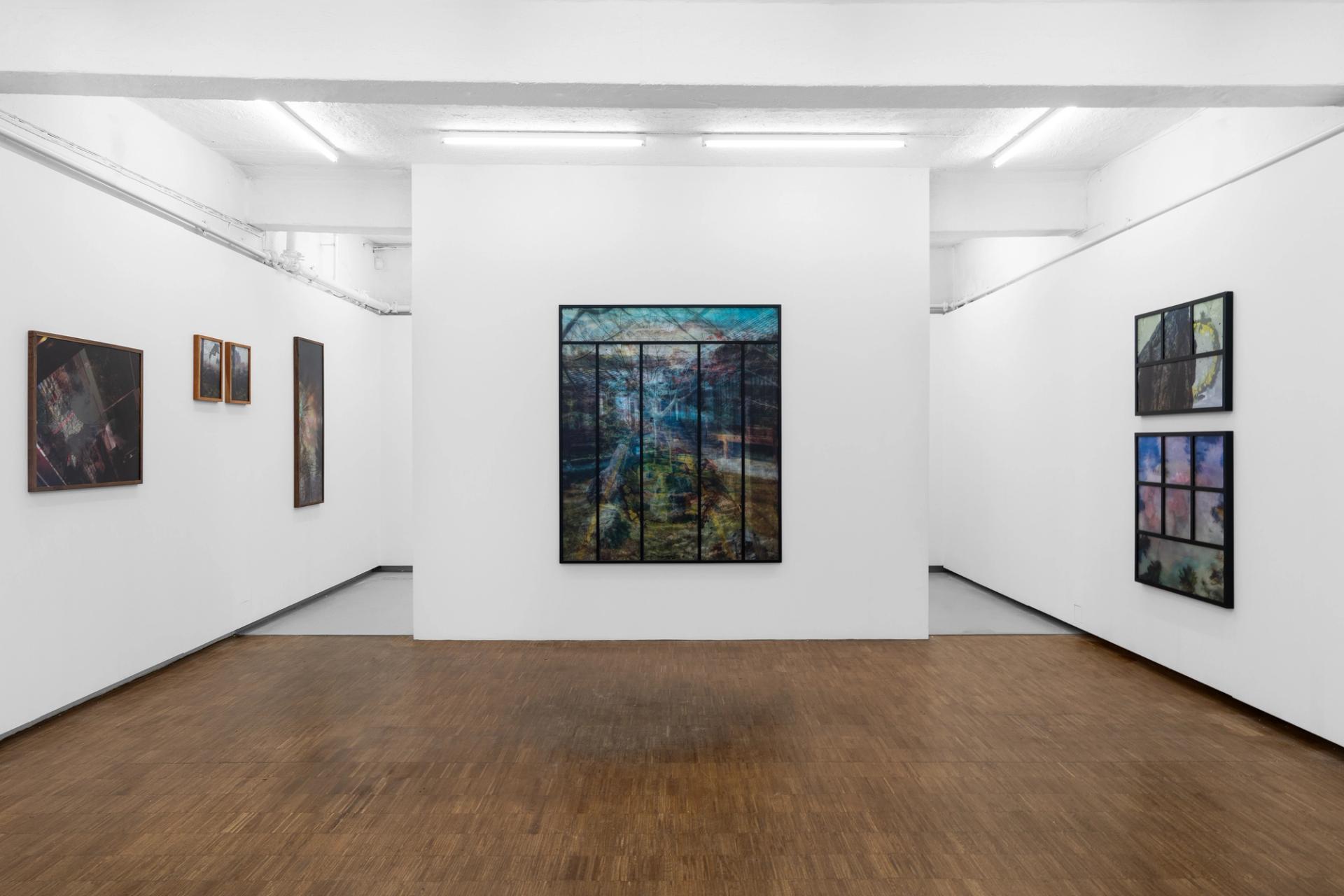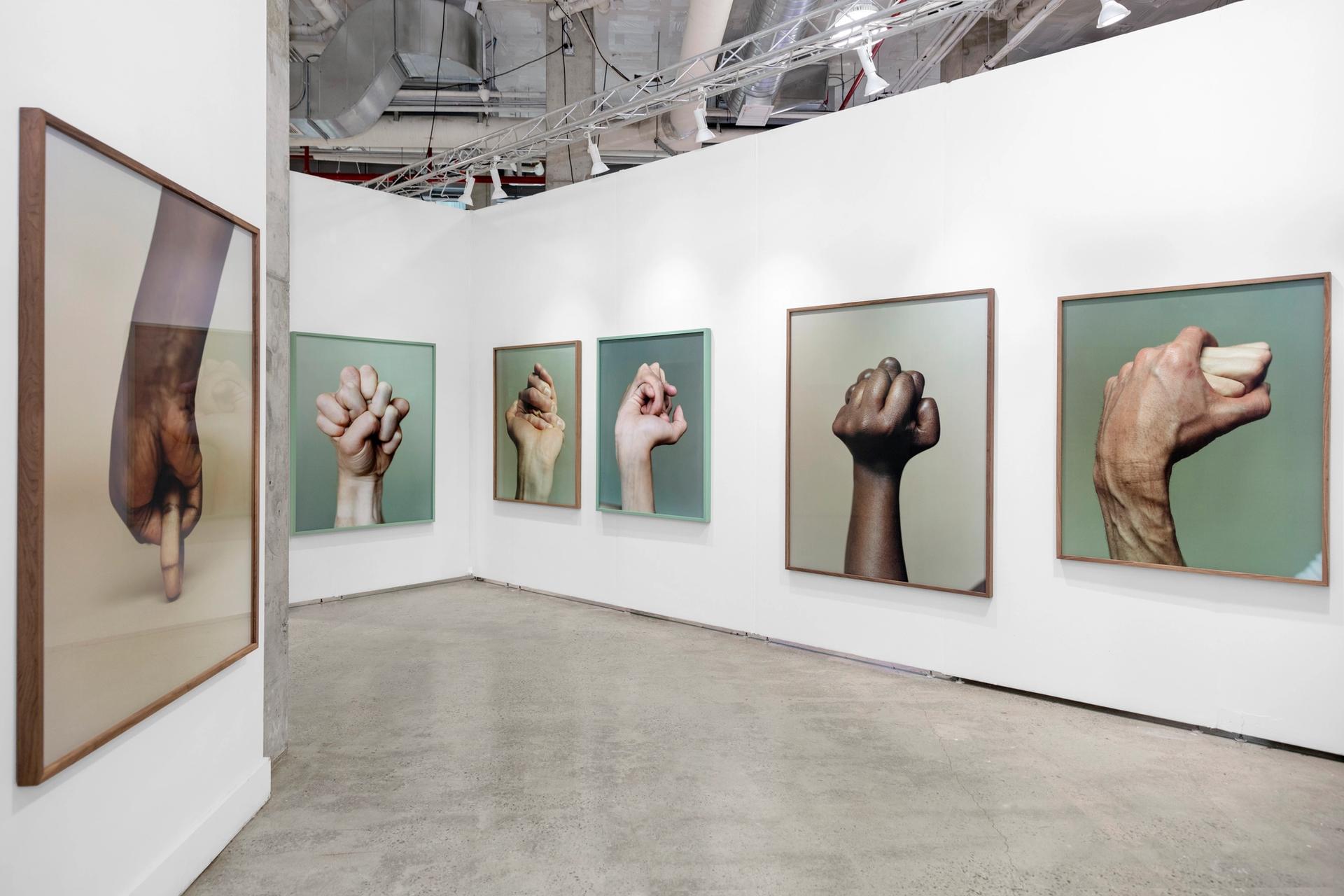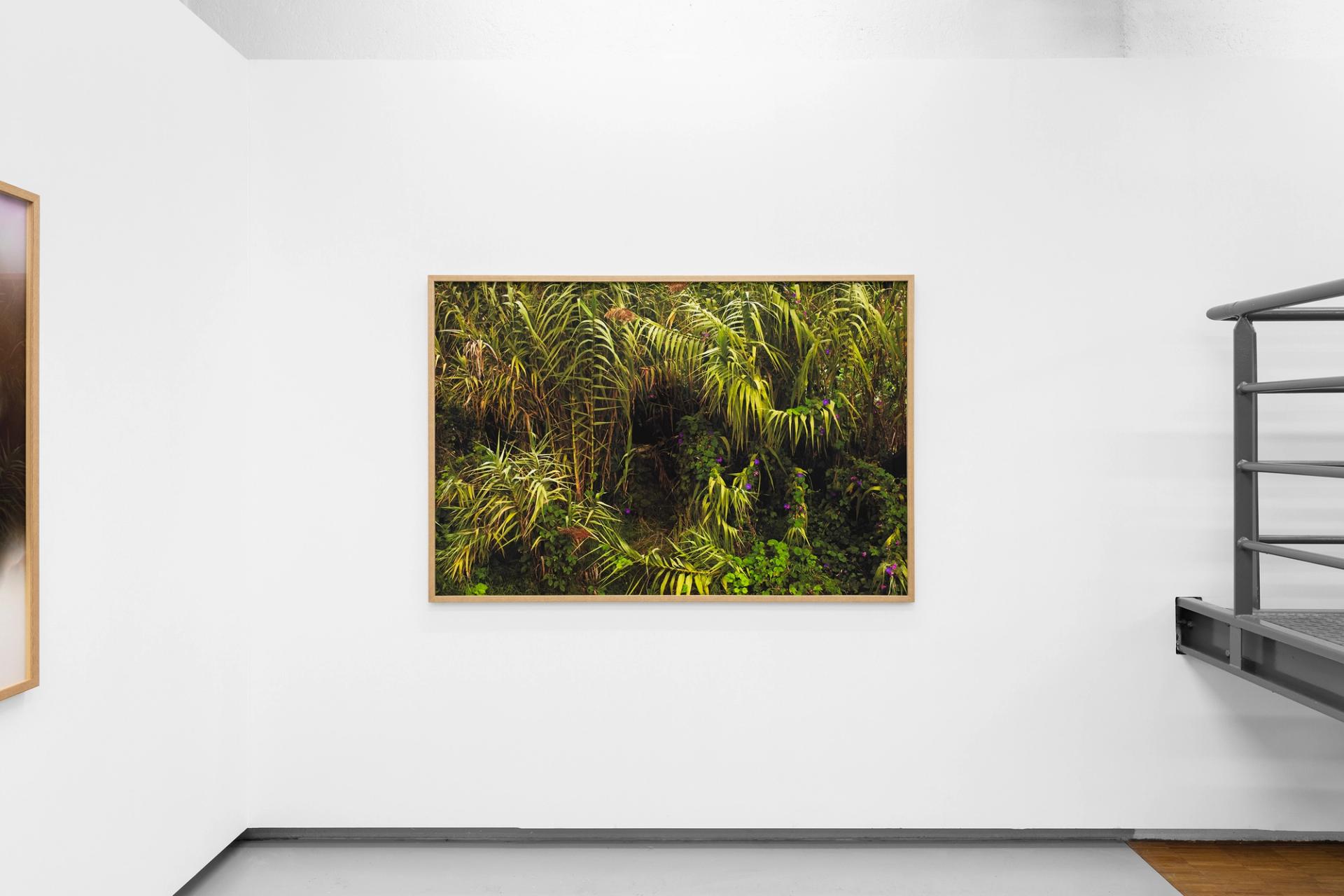
Ingrid Eggen (b. 1979) is based in Oslo, Norway. Recent solo exhibitions include Oslo Negativ (2021), The 9th f/stop – Festival für Fotografie Leipzig (2021), Fotografihuset at Sukkerbiten (2020), Noplace (2020), Sandefjord Art Center (2020), gallery Knipsu, Bergen (2018) and MELK, Oslo (2017). Eggen’s work has recently been acquired by the National Museum in Norway, KIASMA, Møllersamlingen, Haugar Vestfold Kunstmuseum, Equinor Art Programme and KORO.
We are proud to present the second solo exhibition by Ingrid Eggen at MELK titled grapple grasp.
What does it mean to get a grip? Or to grasp something? These questions are underlying Ingrid Eggen’s recent body of work. For a decade Eggen has been exploring the body as a site for involuntary everyday actions, the ones we deem irrational, driven by instincts and reflexes. Through several projects, she has photographed young women and men as they twist and bend out of their ordinary shapes. In intense and long sittings, her models perform awkward, complex poses that unexpectedly disjoint and juxtapose different parts of the body. Recent works disjoint the body further by concentrating on contorted hands, a move that is deepened in the new photographs presented in the exhibition grapple grasp. In a muted color palette, eleven large color prints depict hands performing elaborate, acrobatic gestures that vaguely echoes ones we know – a clenched fist, a shadow play figure – yet that escape easy decoding.
Gesture is one of the obsessions of modernity, it has been stated. Methods of studying, observing and archiving were put to use in science and art, for example, to build anthropological catalogues of human embodied knowledge and memory, or to boost efficiency in industrial production. Film and photography have been instrumental in this endeavor, as means to record, dissect, fragment, isolate, extract, slow down and store certain gestures from the flow of life. Eggen’s project stands in continuation with and contrast to this tradition. Rather than capturing gestures that can be further honed for utilitarian and economic purpose, or that are already deeply encultured and engrained in our bodies, she seeks out the ones that are not. Thereby she partakes in the production of a new bodily language in order to reach beyond the optimizing and ordered organization of the body.
In her work, Eggen is interested in how living bodies develop new physical and psychological capabilities in response to changed living conditions, be they cultural, social, technological or environmental. A general ecological turn in contemporary philosophy and art resonates here, in which attention is directed towards the interrelations between organisms and their milieus. One can also see the works in grapple grasp against the more specific backdrop of an intensified formalization of hand gestures put in place by the influx of, and our quick habituation with, touchscreens in the last decade. Surely, gestures of the body and of the hands have historically been subjected to formalization and codification. Classical and Renaissance rhetorical treatises provided detailed guidance to orators regarding the rhetorical power of specific gestures. The Mudras of Buddhism and Hinduism provide an extensive catalogue of symbolic gestures of the hands and fingers used in meditation, ceremonies and dance, considered to release certain reflexes. In gang culture, hand signs are key identificatory markers. Indeed, body language and sensory perception is always culturally coded, as pointed out for instance by anthropologist Constance Classen. With touchscreens, however, this codification is of a different and highly intensified order, with tech companies patenting and securing corporate ownership to a rapidly increasing number of (touch) gestures. Thereby a highly formatted language of hand gestures is in development.
In contrast, the acrobatic bending and entwining of fingers, palm and back of the hand that we encounter in Eggen’s work are seemingly devoid of communicative power or utilitarian purpose. The large prints enhance the sculptural qualities of the molded hands, which appear almost as autonomous bodies. A starting point for the series is however the fundamental human gestures of grasping and throwing. Eggen has staged a confrontation between the two. Hands and fingers grasp onto each other, in some cases forcefully, while simultaneously pushing away. These dual forces reshape, expand and stabilize the hands in novel configurations, wherein two hands merge into one. From their seemingly impossible placements of muscles and bones emerges a more animalistic and instinctive body, demonstrating an affinity with the Surrealist quest to move beyond the confines of rational modernity.
What, then, does it mean to get a grip on things? In grapple grasp it may be to hold on even tighter to thereby fully let go.
Text by Susanne Østby Sæther
The exhibition is supported by Arts Council Norway and Oslo Kommune

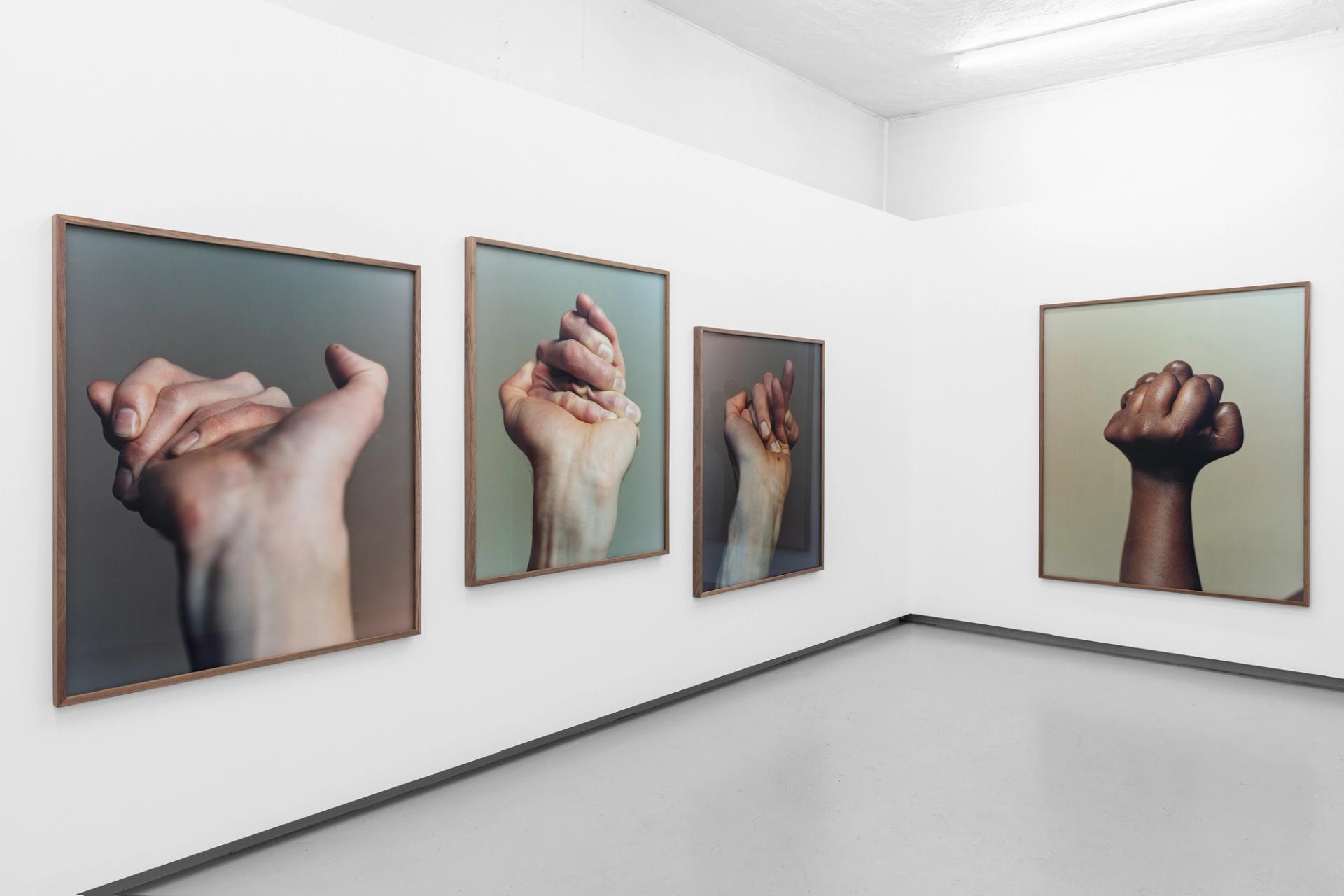
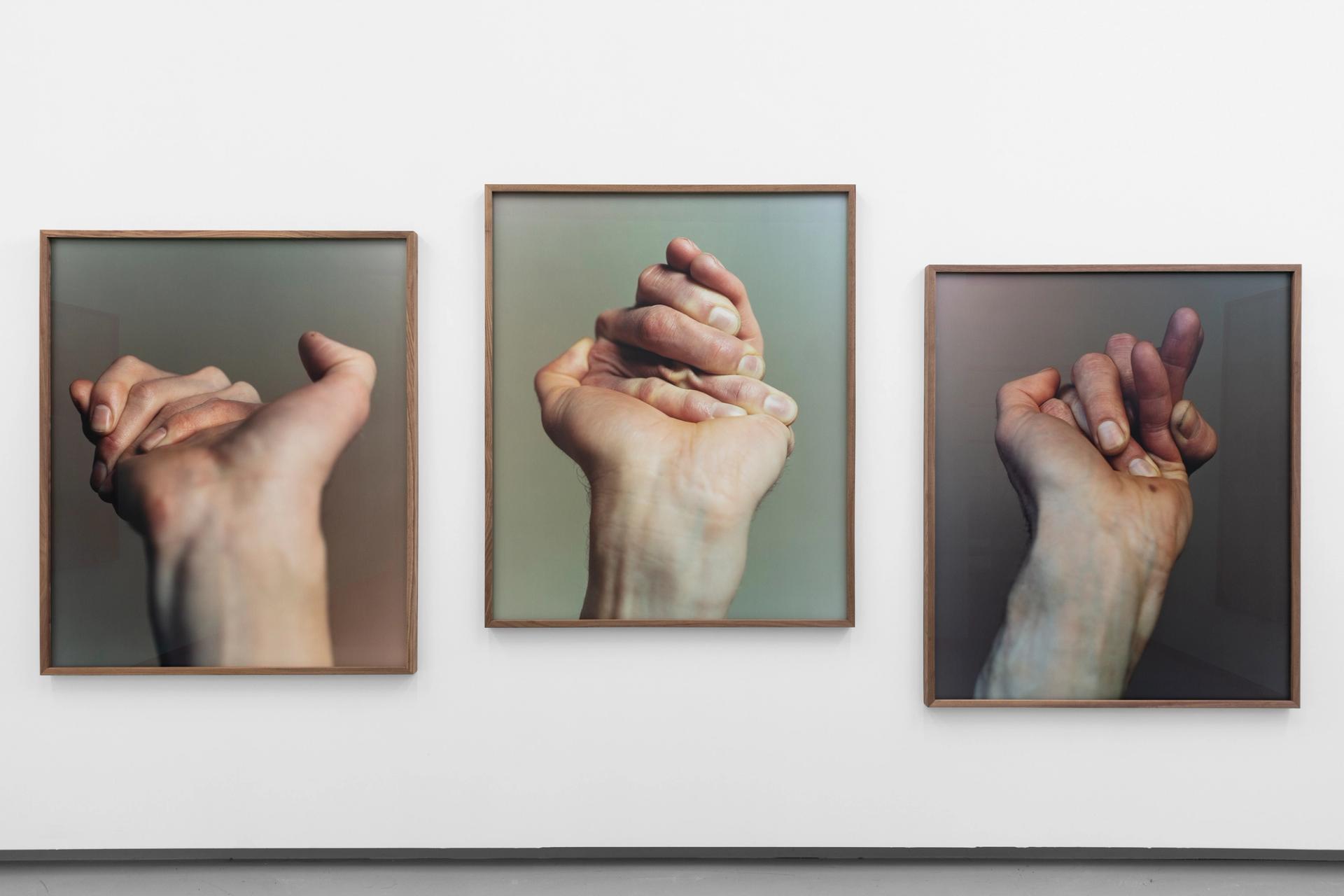
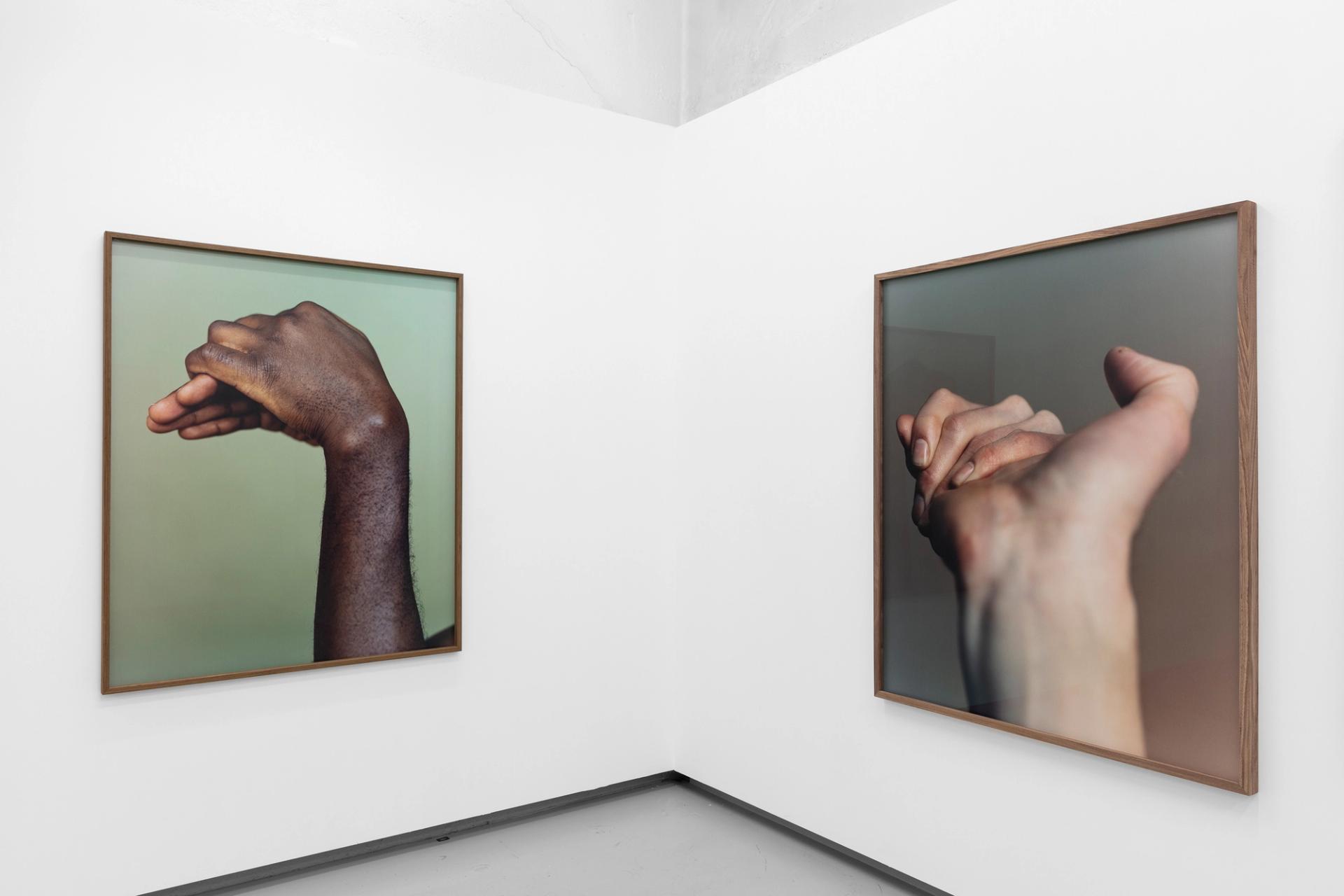





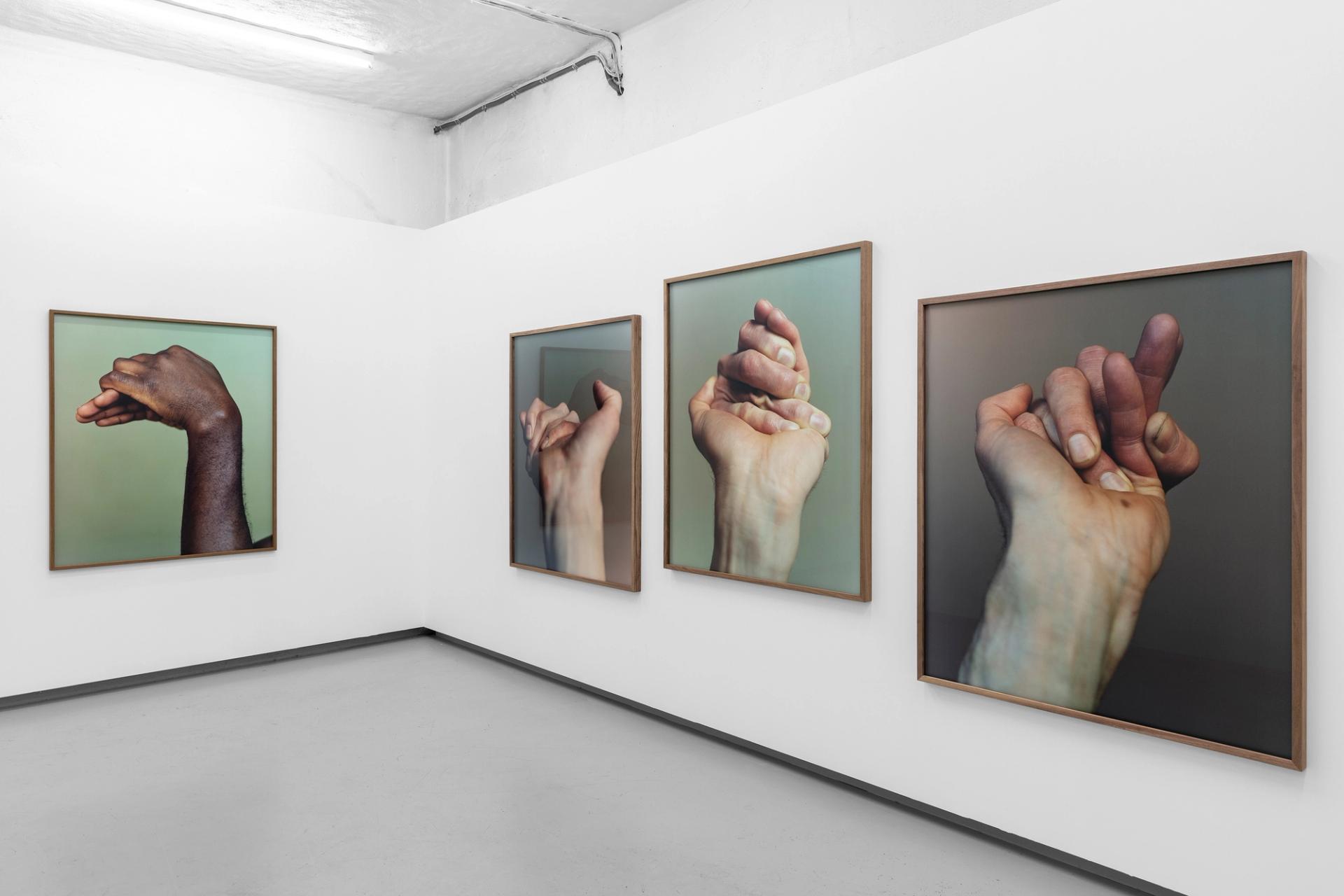


↓ Previous Shows
